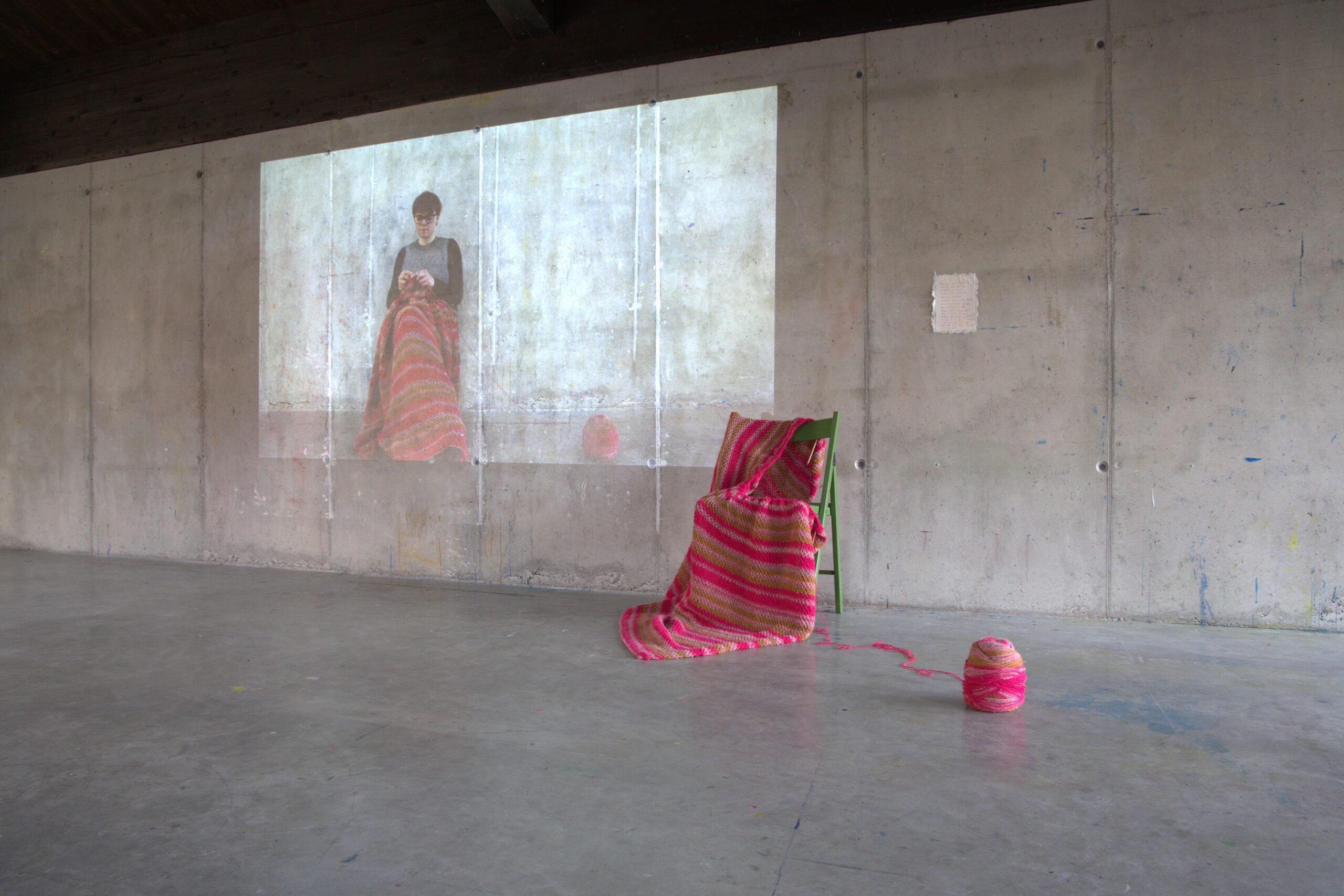Manuela Naveau, curator of the Kunstuni Campus at the Ars Electronica Festival and university professor of Critical Data / Interface Cultures, talks about noisy sliding doors on Linz’s main square—and what this installation has to do with Einstürzende Neubauten, Beyoncé, and Hannah Arendt.
Guest article by the University of Arts Linz
In light of the climate crisis, wars, and the ever-increasing power of tech giants, this year’s Ars Electronica Festival poses the big question: “PANIC – yes/no?” As one possible answer, the University of Arts Linz is dedicated to the agenda “Alles. Immer. Offen.” A large sound installation will be placed on the main square, the seat of the Linz University of Art: a series of sliding glass doors emit unexpected sounds and noises when passed through, seeking communication with passers-by (architectural design Paul Eis, audio setup Jürgen Ropp, sound environment students of the Linz University of Art).
In the western bridgehead building of the Kunstuni Linz, nine international universities will also present their highlights, and the Sofia Academy of Arts will be the special featured partner university in the splace. In the inner courtyard of the eastern bridgehead building, the Soundcampus will open on September 2, and concerts, performances, and DJing will be on the program from Tuesday to Thursday evening.
Manuela Naveau, curator of the Kunstuni Campus and university professor for Critical Data / Interface Cultures, will give a preview of the highlights of young media art, which will be presented by the students in the form of exhibitions, installations, interventions, performances, screenings, and workshops.
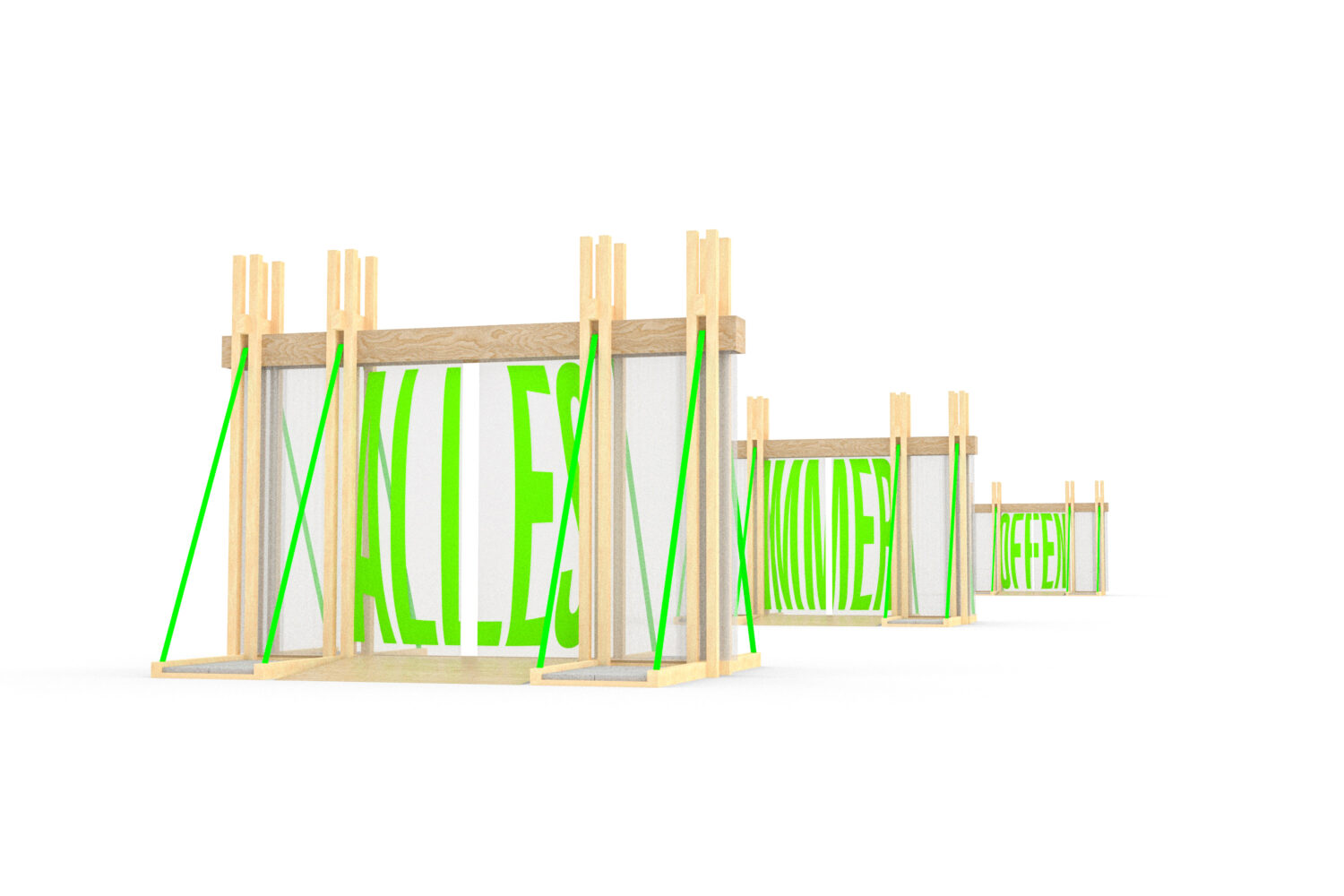
Ars Electronica has chosen “PANIC – yes/no” as the title for this year’s festival. In response, the Linz University of Art is erecting a series of sliding doors on the main square with the slogan “Alles. Immer. Offen.” What can visitors expect there?
Manuela Naveau: Our curatorial intervention is somewhat absurd, perhaps meaningless to some, challenging to others, and an inspiration to still others in terms of how we deal with social issues and attributions to panic and the public sphere. Absurd, challenging, and a trigger to perhaps see things differently again are moments we associate with panic. In situations of individual panic, we actually shut ourselves off and focus solely on ourselves. However, we now find ourselves in a time that promotes digital narcissism and stimulates the cult of the self. Starting from individual panic, we ask whether we should not actually be collectively panicked. Should we not see ourselves as a community that feels and addresses the problems of our time?
So how should we respond to these turbulent times?
Manuela Naveau: „Alles. Immer. Offen.“ can mean that anything can happen and that we should just let everything in and out. That alone can cause panic in some people. For others, it can mean that they want to break down barriers and see this as a welcoming gesture of openness. „Alles. Immer. Offen.“ can also mean that we don’t know what the future holds and that the outcome of our current situation is open and must be seen as such and negotiated publicly. This brings us back to our three-meter-high sliding glass doors, behind which a whole new world opens up in the middle of the main square. Our sliding doors sigh, sing, and laugh as you walk through them, so they start to interact with the audience. They remind you of entering shopping malls or hospitals, but they don’t promise anything. Except that they constantly open and close so they can open again. For us, the world lies between the doors. And next to them. This challenges our relationship with the world through a so-called constant, tireless, automated absurdity.
Because, in the face of constantly emerging panic, the art university campus also wants to draw attention to the diversity of life and the ups and downs of our existence?
Manuela Naveau: Yes, that could be interpreted that way. The idea for “Alles. Immer. Offen.” actually came to me during a car ride in early February. I was listening to the radio and they were talking about the Grammy Awards and how Beyoncé had finally won a Grammy for Album of the Year. They mentioned that firefighters from Los Angeles were presenting her with the Grammy because the devastating forest fires there had been extinguished at the same time. She concluded her short acceptance speech with the words, “I hope we open doors.” I was confused because only the firefighters were mentioned in context, not the protests that were already being organized in several US cities the next day against the immigration policy of Donald Trump’s second administration. I came home and, unable to shake it off, did some research and realized that this metaphor of opening doors is actually one that fits the art university campus perfectly. It also immediately reminded me of the work of Kim Beck and Osman Khan, who installed a sliding glass door in the park some time ago. An ingenious work and very inspiring.
And there were also references to Einstürzende Neubauten and Hannah Arendt for the imperative “Alles. Immer. Offen.,” right?
Manuela Naveau: Definitely. Our title is derived from the album “Alles wieder offen” (Everything Open Again) by the well-known German band, which was released in 2007. My colleague Alexander Wöran came into my office one day and pointed out that Einstürzende Neubauten deal with different forms of new beginnings in a very poetic and ironic way in a song of the same name. Out of respect for the band’s epic and musical work in general, we decided to call the door installation and the Kunstuni Campus “Alles. Immer. Offen.” (Everything. Always. Open.). Political freedom, public life, and moral responsibility are themes that Hannah Arendt addressed in her various writings and publications. In the preparations for the Kunstuni Campus, her “Thoughts on Lessing – On Humanity in Dark Times” were particularly important. These are thoughts she presented in her acceptance speech for the Lessing Prize in 1959, in which she stated, among other things: “The world lies between people, and this between (…) is today the object of the greatest concern and the most obvious upheaval in almost all countries.” She thus called for an attitude of remaining committed to the world and questioning our relationship to it. (An excellent little book, by the way: Hannah Arendt – Freundschaft in finsteren Zeiten [Friendship in Dark Times], edited by Matthias Bormuth, Matthes & Seitz, third edition, Berlin 2023, note).
So the doors can also be understood as an invitation to step out into the world and embrace others?
Manuela Naveau: If someone wants to interpret it that way, they are welcome to do so. Whether stepping in, out, or between: with “Alles. Immer. Offen.” we want above all to convey hope. We ask ourselves: Could it be that we are becoming less and less willing to accept moments of openness? Why and what are we afraid of? What lies behind, between, or next to the doors, and what promises come with doors that open automatically? As I said, in a capitalist sense, automated sliding doors in shopping malls represent a promise; they sell us an idea of a world and are part of a marketing strategy. Here, the public sphere is the market. But the public sphere is more than that; above all, it is a core democratic concept that is not only about access but above all about communication in the sense of different opinions—and not market interests. With the sound and noise installation on Linz’s main square, we do not want to convey any insights or knowledge; rather, we invite people to think. And for us, it would of course be a success if we could get people talking to each other between the doors. We want to create a space in the public sphere that is opened and then opened again and again.
In these times of sustainability, the components of your elaborate sound installation are also reusable, is that right?
Manuela Naveau: Exactly. Our architecture students will use the wood, and the glass for the sliding doors will go to the workshops at the University of Art and Design Linz, as will the strips used to secure it. The Peter Danereder company in Hörsching is supporting us with the installation of the drive mechanism and infrared sensors, which we are able to borrow thanks to the generous support of the company. We are also participating in this year’s “Arts of Change – Change of Arts” funding program for art universities. As part of a collaboration with the Climate and Energy Fund, students are presenting their projects for this year in the POSTCITY.
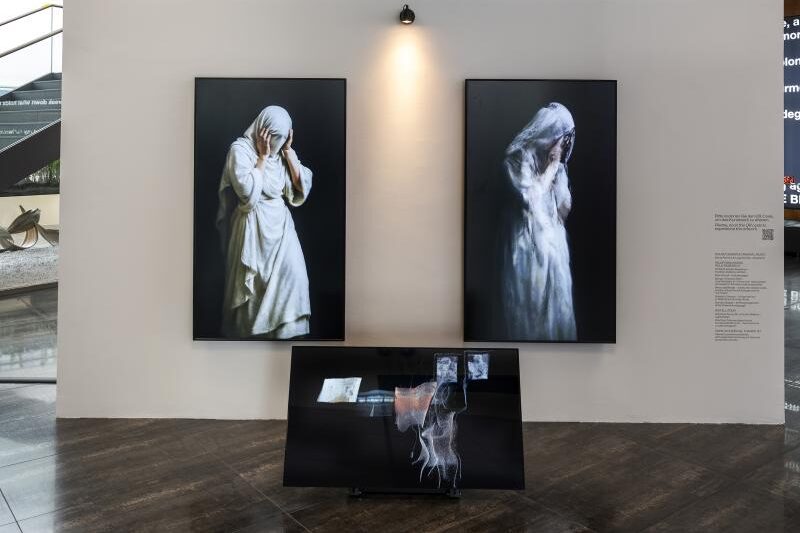
Speaking of POSTCITY: What highlights does the Interface Cultures program have in store this time around in the old post office building at the Linz train station?
Manuela Naveau: This year, we have sixteen works that will be presented in POSTCITY. For the first time, we had to make a kind of internal selection, because we are accepting more and more students every year, so our space is limited when it comes to bringing the works to life—after all, the audience can look forward to interactive projects in particular. This also means that all of the works are highlights. In addition, a performance by Andrea Corradi will take place at the Lentos Museum on Saturday at 12 noon sharp to the weekly siren signal, and another sponsored work by the young artists’ collective MAalex, in collaboration with Landeskultur GmbH and EnergieAG, will be exhibited at the Energie AG Tower opposite Linz railway station. Last but not least, I am delighted that Till Schönwetter’s work “a terrarium” will be shown in the panic-themed exhibition in the POSTCITY bunker. This means that an active student is also part of one of the most important exhibitions at the festival, which I developed together with the Ars Electronica team, in particular with Christl Baur and Lisa Shchegolkova.
The Kunstuni Campus is now considered a major fixture of the Ars Electronica Festival in Linz—a platform for presenting work by students and teachers and a place for exchange with other universities from around the world. Will it expand in the coming years?
Manuela Naveau: Of course, there will continue to be installations, performances, screenings, workshops, the Soundcampus, activities in the main square, and much more. In addition, there will be various presentations by partner universities in the field of media art. In the Brückenkopfgebäude West alone, nine international universities will be showcasing their work this year. Ars Electronica and the University of Art and Design Linz are working very closely together on this. As I researched in a blog post for Ars Electronica in 2019, 2002 was the first year that a campus format was officially mentioned in the context of an Ars Electronica Festival entitled “Takeover.” I believe that Ars Electronica Futurelab actually initiated its first collaboration in 2001, but this has not yet been documented in the catalog. The background to this was that the art university presented itself as a venue during the festival. Nowadays, Kunstuni Campus doesn’t just mean the art university as a location and partner, but is synonymous with a space that’s available for the production, reflection, and presentation of young, local, and international media art. The main focus is on critical reflection on media through media: media art, media design, and media theory. The teaching of media art and culture is now a focus at many international universities, and we are proud that this has been actively promoted in Linz since 2004 under the direction of media artists Christa Sommerer and Laurent Mignonneau, together with Interface Cultures and the students.
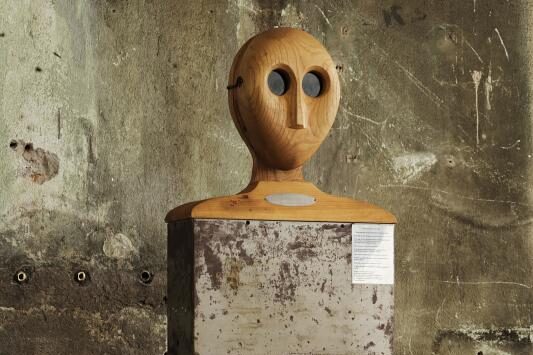
This time, the Sofia Academy of Fine Arts is the special featured partner university, exhibiting at the “splace” gallery of the Linz University of Art on the main square. What is there to experience?
Manuela Naveau: “/decisions/make/art” is the title of the exhibition, which presents a selection of projects by students, graduates, and lecturers from the Master’s program in Digital Art at the National Academy of Arts in Sofia. Venelin Shurelov heads the Master’s program and is a regular guest at the Ars Electronica Festival. Last year, we got to talk a bit more and exchanged ideas about the students’ work. His approach to artistic production and research is inspiring, and his assessments demonstrate great sensitivity. This is also the case this year, as he offers a way of viewing art as a logic of decisions as a special featured partner university in the “splace” gallery. He writes: “Composition is a system, creation is a protocol, and authorship is a dynamic engagement with the environment.” The works on display include generative visual systems, interactive installations, machine learning, and experimental participatory formats. He continues: “/decisions/make/art” is not just a title—it is a command, a condition, and a conceptual framework. The exhibition thinks not only in images, but in systems; not only in aesthetics, but also in the ethics of interaction between humans and technology.” Today, the program is shaping a new generation of artists who are rethinking creative practice through interdisciplinary approaches and creating a space for hybrid thinking—between the visual, the technological, and the critical. And I am not only looking forward to the exhibition at the Kunstuni Campus in splace, but also to our excursion to Sofia in October, which we have already finalized on behalf of Interface Cultures in the master’s program.
What else can young media art do to promote reflection instead of panic?
Manuela Naveau: I think that the example from Sofia and the work of other universities will show that we are all working on similar topics with similar media. However, the stories we tell are different in detail. And that it will not help us if we try to make ourselves heard on our own. That we should practice much more in working together, in using, lingering, and debating in shared spaces and public spheres where we can test and learn to understand diversity and democracy. And at the same time, we know and recognize that it is “Alles. Immer. Offen.”
In response to this year’s festival theme, PANIC – yes/no, the Campus Exhibition 2025 brings together 37 universities from across the globe and contributions from 14 departments of the University of Arts Linz. Spanning multiple locations, the exhibition examines the evolving role of creative education in a time defined by instability and transformation.
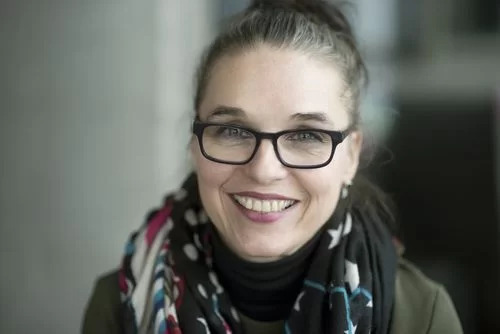
Manuela Naveau
Manuela Naveau, born in Linz in 1972, is a university professor, independent curator, and artistic researcher. Together with Gerfried Stocker, artistic director and CEO of the Ars Electronica Center, she developed the Ars Electronica Export department, which she headed for almost 18 years. Since 2020, Manuela Naveau has been a university professor of Critical Data at the Interface Cultures Department / Institute for Media at the University of Art and Design Linz, which she has headed since February 2023 and where she recently initiated the Critical Data Research Group.
